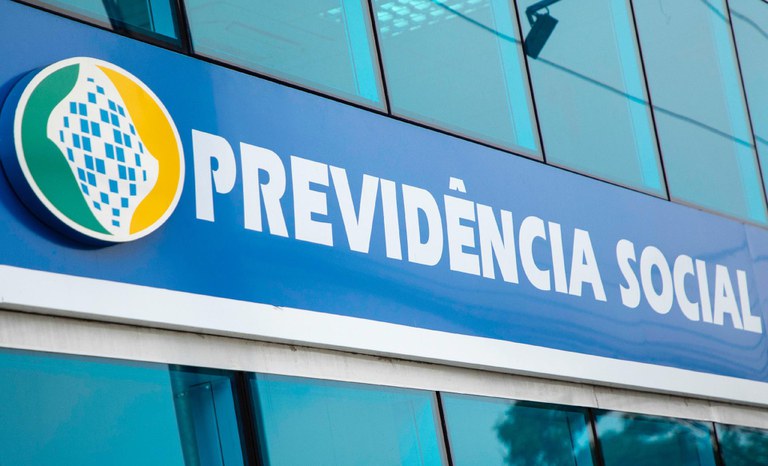Stephen Wozniak (conhecido como Woz ou Wizard de Woz) (Nasceu em 11 de agosto, 1950) foi pioneiro na iniciativa de colocar computadores disponíveis para o consumidor comum. Apesar de sua contribuição ter sido uma compilação de poucas bem conhecidas idéias que coincidiram perfeitamente com o surgimento da tecnologia necessária para produção em massa de computadores, a ingenuidade de Stephen Wozniak, sua persistência e criatividade deram a ele o crédito por iniciar a revolução do PC.
Inspiração e seus primeros passos
As primeiras inspirações de Wozniak vieram de seu pai Jerry que foi um engenheiro da Lockheed, e de um personagem de ficção literário: Tom Swift. Seu pai o contaminou com a fascinação por eletrônica e frequentemente participava das criações de jovem Woz. Tom Swift, por outro lado, foi para Woz um exemplo da liberdade de criação, conhecimento científico e da habilidade de encontrar soluções para problemas. Tom Swift ainda iria ilustrar os grandes prêmios que o inventor receberia. Hoje, Wozniak retorna aos livros de Tom Swift e os lê para crianças como uma forma de inspiração.
Os valores de Woz foram moldados durante anos pela sua família, filosofia cristã, ética de rádio amadores (ajudando pessoas em emergências), livros (a atitude utilitária e humanitariária) e outros.
Como um último impulso para sia vida, Wozniak adorava todos os projetos que requeriam grande esforço mental. Ele aprendeu as bases da matemática e da eletrônica com seu pai. Quando Woz tinha 11 anos, ele construiu o seu própia estação de rádio amador, e obteve uma licença de rádio amador. Aos 13 anos, ele foi eleito presidente do clube de eletrônica de sua escola, e ganhou o primeiro prêmio em uma feira de ciências por uma calculadora baseada em transistores. Ainda aos 13 anos, Woz construiu seu primeiro computador que foi a base técnica para o seu sucesso posterior.
Juntamente com John Draper ele construiu Blue Boxes (Caixas azuis), dispositivos com o qual era possível burlar o sistema telefônico ao emular pulsos (veja phreaking). Com Steve Jobs, que ele conheceu trabalhando como um empregado de verão na HP, ele vendia estas caixas.
O começo da Apple
By 1975, Woz dropped out of the University of California, Berkeley and came up with a computer that eventually became successful nationwide. However, he was largely working within a scope of the Palo Alto-based Homebrew Computer Club, a local group of electronics hobbyists. His project had no wider ambition.
At the club he met Steve Jobs. Jobs, 5-years Woz's junior, had himself dropped out of Reed College in 1972. Jobs and Wozniak came to the conclusion that a completely assembled and inexpensive computer would be in demand. They sold some of their prized possessions (e.g. Woz's HP scientific calculator and Steve Jobs's Volkswagen mini-van), raised $1300, and assembled the first prototype in Jobs' garage. Their first computer was quite unimpressive by today's standards, but in 1975 it was an engineering marvel. In simplicity of use it went years ahead of the Altair, which was introduced earlier in 1975. Altair had no display and no true storage. It received commands via a series of switches and a single program would require thousands of toggles without an error. Altair output was presented in the form of flashing lights. Altair was great for true geeks, but it was not usable for a wider public. It would not even come assembled. Woz's computer, on the other hand, named Apple I, was a fully assembled and functional unit that contained a $25 microprocessor on a single-circuit board with ROM. On April 1, 1976, Jobs and Wozniak formed Apple Computer Company. Wozniak quit his job at Hewlett-Packard and became the vice president in charge of research and development at Apple. Apple I was priced at $666.66. Jobs and Wozniak sold their first 25 computers to a local dealer.
Wozniak could now focus full-time on fixing the shortcomings of Apple I and adding new functionality. Apple I earned the company close to a million dollars. His new design was to retain the most important characteristics: simplicity and usability. Woz introduced high-resolution graphics in the Apple II. His computer could now display pictures instead of just letters: "I threw in high-res. It was only two chips. I didn't know if people would use it." By 1978, he also designed an inexpensive floppy-disk drive. He and Randy Wigginton wrote a simple disk operating system.
In addition to his hardware skills, Wozniak wrote most of software that ran Apple. He wrote a Basic interpreter, a Breakout game (which was also a reason to add sound to the computer), the code needed to control the disk drive, and more. On the software side, the Apple II was also made more attractive to a business user by the famous pioneering spreadsheet: Dan Bricklin and Bob Frankston's VisiCalc. In 1980, the Apple company went public and made Jobs and Wozniak millionaires. At the age of 27, Jobs was the youngest Fortune 500 man in 1982—a rare case before the dot-com era.
Incidentally, in 1978, when the company cut the price of Apple II, it helped to launch yet another meteoric software career, that of Mitch Kapor. Kapor scraped enough money to buy his own Apple. Inspired by VisiCalc and a meeting with its inventors, he went on to develop Lotus 1-2-3 and swept the spreadsheet market place for years to follow.
O declínio da Apple
For years the Apple II was the main source of profit at Apple, and it assured the company's survival when its management undertook much less profitable ventures like the ill-fated Apple III and the short lived Lisa. It was because of the reliable profits from the Apple II that Apple was able to develop the Macintosh, market it, and gradually make it evolve into a machine which is now at the center of all Apple products. In a sense then, Wozniak can be considered as the financial godfather of the Mac.
In February 1981, Steve Wozniak's private plane crashed. As a result, he had temporary short-term memory loss. He had no recollection of the accident and, for a while, didn't even know he had been involved in a crash. He began to piece together clues from things people had said to him. He asked his wife if he had been involved in an accident of some kind. When she told him of the event, his short-term memory was restored.
Woz became less enthusiastic about his work for Apple. He got married and returned to the University at Berkeley under the name "Rocky Clark" to get his degrees in 1982 in computer science as well as in electrical engineering. In 1983 he decided to return to mainstream Apple development. However, he wanted to be no more than just an engineer and a motivational factor for the Apple workforce.
O fim de uma era
Woz left Apple for good on February 6, 1985, nine years after setting up the company. Wozniak then founded a short-lived venture called CL9 which developed home remote control switches. Out of spite, Jobs threatened his suppliers to not do business with Wozniak or risk losing Apple's business. Wozniak was able to find suppliers other than the ones he had worked with for years, but was disappointed in his former friend's bitterness.
Jobs was eventually forced to leave Apple as a result of a power struggle. Wozniak and Jobs were proud to have originated an anti-corporate ethic among big players of computer market. Jobs focused on not always practical innovation with his NeXT vision, while Woz went into teaching (he taught fifth grade students) and charitable activities in the field of education.
Reconhecimento e o que aconteceu depois
Steve Wozniak recebeu a Medalha Nacional dos EUA do presidente dos estados Unidos em 1985. Em Setembro de 2000, Steve Wozniak foi incluído na galeria da fama dos inventores nacionais.
Após deixar a Apple, Woz forneceu todo o dinheiro, além de uma boa parte de suporte técnico para a escola do distrito de Los Gatos. Em 2001, Woz fundou a empresa Wheels Of Zeus, uma compania que produz soluções sem fio.
links externos
- Woz.org Site oficial de Steve Wozniak
- Digital Village Audio Archive of interview with Steve Wozniak (mp3 format)
- Apple Computer
Predefinição:Biografias Tabela
de:Stephen Wozniak
fr:Stephen Wozniak
pl:Steve Wozniak
sv:Steve Wozniak
en:Steve Wozniak




 " class="attachment-atbs-s-4_3 size-atbs-s-4_3 wp-post-image" alt="O que estudar para o enem 2023">
" class="attachment-atbs-s-4_3 size-atbs-s-4_3 wp-post-image" alt="O que estudar para o enem 2023"> " class="attachment-atbs-s-4_3 size-atbs-s-4_3 wp-post-image" alt="Qual melhor curso para fazer em 2023">
" class="attachment-atbs-s-4_3 size-atbs-s-4_3 wp-post-image" alt="Qual melhor curso para fazer em 2023"> " class="attachment-atbs-s-4_3 size-atbs-s-4_3 wp-post-image" alt="Enem: Conteúdos E Aulas On-Line São Opção Para Os Estudantes">
" class="attachment-atbs-s-4_3 size-atbs-s-4_3 wp-post-image" alt="Enem: Conteúdos E Aulas On-Line São Opção Para Os Estudantes"> " class="attachment-atbs-s-4_3 size-atbs-s-4_3 wp-post-image" alt="Como Fazer Uma Carta De Apresentação">
" class="attachment-atbs-s-4_3 size-atbs-s-4_3 wp-post-image" alt="Como Fazer Uma Carta De Apresentação"> " class="attachment-atbs-s-4_3 size-atbs-s-4_3 wp-post-image" alt="Como Escrever Uma Boa Redação">
" class="attachment-atbs-s-4_3 size-atbs-s-4_3 wp-post-image" alt="Como Escrever Uma Boa Redação"> " class="attachment-atbs-s-4_3 size-atbs-s-4_3 wp-post-image" alt="Concurso INSS edital 2022 publicado">
" class="attachment-atbs-s-4_3 size-atbs-s-4_3 wp-post-image" alt="Concurso INSS edital 2022 publicado">


